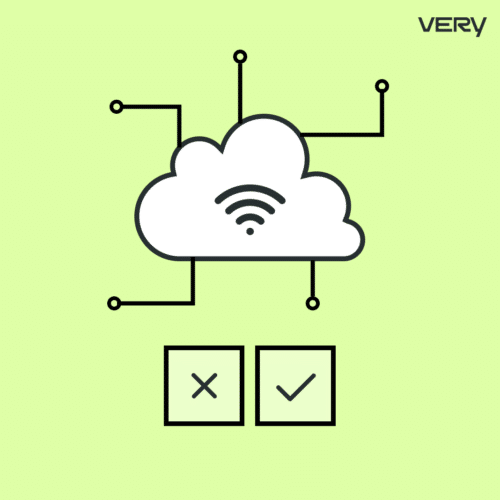BLOG
Top Challenges of Managing HR for a Remote Workforce
Fifteen years ago, the idea of having a 100% remote workforce was almost laughable. But today remote work is becoming more and more commonplace. Employers are beginning to adopt more remote work policies — and for good reason. A recent survey showed that employees who work from home at least once a month are 24% more likely to feel happy and productive than office-bound employees.
While the benefits of having a remote workforce are significant, unique HR challenges rise out of having a remote team. As I’ve found out first-hand, there’s no guidebook for managing HR at a 100% remote company. After all, a recent study found that only 16% of global companies are completely remote. As such, we HR leaders are left to our own devices to face challenges as they arise and blaze our own trail.
Since founding the company in 2011, Very’s leadership team has worked hard to build a company where remote work not only improves work-life balance but also increases productivity while maintaining a vibrant company culture. When we went 100% remote at the end of 2018, we doubled down on our commitment to be a best-in-class remote company.
With each year that goes by, we identify and tackle challenges only to find that new challenges arise. We are constantly improving upon our communication policies, transparency, and culture. Here are some of the HR challenges we’ve faced and the creative ways we’ve addressed them.
Interviewing, Hiring, and Onboarding
No matter what kind of company you work for, hiring can be an incredibly difficult task. You not only have to screen for hard skills, but also soft skills like communication and collaboration. These can be tough traits to screen for even when you can meet the candidate in person, but the difficulty accentuated at remote companies.
- Interviews are held via video conference, not just phone calls. Video conferencing technology gives us the ability to pick up on non-verbal cues like body language, giving us key information we wouldn’t get if we were only speaking on the phone.
- Multiple team members interview candidates. Instead of simply screening for technical competency, we also have candidates interview with someone from our leadership team. These interviews are typically screening for the ability to learn new concepts/skills and teach their fellow team members (core pieces of our career development framework).
Onboarding also presents some unique challenges. In an ideal world, when we bring on a new employee, I would gather the company in a room to welcome the newest team member. I’d tie balloons on their chair or have cake in the break room. Since we can’t do any of those things, here are some of the ways we work to make sure new employees’ first few weeks feel special:
- We send each new hire a welcome package of SWAG so they can start showing their “Very spirit” from day one.
- We have a segment of our monthly all-hands meeting where we ask the new employee 10 fun “get to know you” questions.
- Each new employee is paired with an established team member to learn how we work.
Communication
For people who’ve always worked in an office, it can feel odd to not be able to drop by a co-worker’s desk to get an answer to an important question. While effective communication is a challenge for any company, the pain points are more acute with a remote company. Without communication, people don’t know where you are, what you are doing and if you need help with something. Here’s how we ensure active communication at Very:
- Hire Good Communicators: When we’re recruiting, we screen for the ability to work remotely in an effective way. It might seem like working from home would be easy, but it takes a lot of different skills to be successful. Every team member must be an expert communicator, both in written and verbal communications.
- Focus on Transparency: Our employees are pushed to openly share struggles because doing so can save time and might help someone else having a similar issue. It’s necessary for managers to constantly improve their communication skills because they aren’t able to walk past a person’s desk, start up a conversation and recognize that there may be a problem or concern.
- Invest in Tools for Effective Communication: Having the right toolset is essential to creating a remote company that communicates effectively. Here are the tools we’ve standardized on at Very:
- Slack for everyday conversations
- Zoom for multi-person video conferencing
- Glassfrog for knowing exactly what roles and domains other employees have
- Trello for transparency on projects across the company
At any given time, employees are able to view every other person’s role in the company, their domains, projects, and tasks they are working on. Having a clear understanding of who does what in the company is massively important as it eliminates duplication of work. It also allows each individual to be responsible for each project. No hiding behind others. You perform well or you do not, on each and every assignment.
Connectedness
Having employees feel connected is a challenge for a remote workforce. We are constantly trying to discover new ways to keep our team connected, whether it is solely for work purposes, or for social reasons.
- Schedule Regular All-Hands Meetings: Our monthly Fireside chat and Town Halls are crucial for keeping everyone on the same page. The Fireside chats review everything happening in the company- applause for outstanding work, financial health, company outlook- anything of importance that should be shared with all of our employees. Our Town Halls have now been incorporated with our Very Forum. If there is an issue or something causing stress on the company or its employees, the topic will be placed on the Forum so people can have time to think and discuss before it’s brought up on the larger platform. Once the meeting begins, we will run through comments and discuss as a team to try and come up with a resolution.
- Have a Policy for Sharing Video (and Stick to It): Whenever the whole company gets together, we need strong video conferencing software that can support everyone’s video without crashing. After trying many different solutions, we’ve standardized on Zoom. One of our requirements is that each employee must use their video when on calls — whether it be a 1:1 or more of a group setting. When you are on a voice-only call, you aren’t able to see the other person’s facial reactions or body language, which can create quite a disconnect.
- Host In-Person Retreats: Since Very’s inception, we knew it was imperative to our culture to get the team together at least once a year for a Retreat. We didn’t want to be one of those companies where people can go years without physically meeting and spending time with the ones they work. Of course, there are huge corporations who do this sort of thing, but they have dedicated employees or outside help to plan and execute the entire thing. In a small company like ours, it takes a village to get everything set up whether it be booking flights, planning meals, topics for discussion, creating a Hackathon, and the list goes on. It can be very time consuming but in the end, our employees feel more connected with one another and are rewarded for another year of success.
- Support Peer-to-Peer Recognition: In addition to the retreat, we are always trying to come up with more ways to unite team members. We use Bonus.ly to give recognition where it is deserved. Each month, an employee receives Bonus.ly dollars to dole out to whomever for whatever reason. Not only are these bonuses great because employees can use them towards gift cards, but everyone in the company can see who and why others are getting rewarded in our #applause channel.
- Host Social Events: We’ve also created a Remote Trivia Night for anyone who wants to unwind after a hard day’s work. Each game night, we have a different game master who puts together a slideshow of different trivia questions. Learn how to coordinate your own Remote Trivia Night in this blog post.
- Create Team-Building Opportunities: Last year, we decided to create a Fitness Challenge in order to promote healthier lifestyles among team members. Working remotely can definitely take its toll on your health, which is why we wanted to encourage people to become more active. Sitting and working on computers all day — whether remote or in an office — not only increases your health concerns but can also put a strain on one’s productivity. We started with just a step challenge. Each month, the person with the highest amount of steps would win a prize and another participant was randomly selected for another prize. Since then, the Fitness Challenge has evolved to accommodate different wellness goals, whether they’re focused on physical fitness, nutrition, or mental health.
To sum up
It may seem easy to just start a remote company or shift all of your employees to remote, but it’s not. A lot goes into keeping employees happy and engaged, but if done right, you can make your company a really special place to work. We know we aren’t perfect, and we never will be. But that’s not going to stop us on our mission to provide the best workplace for our employees.
Want to join the team? Take a look at our career page for the latest in Very opportunities.









